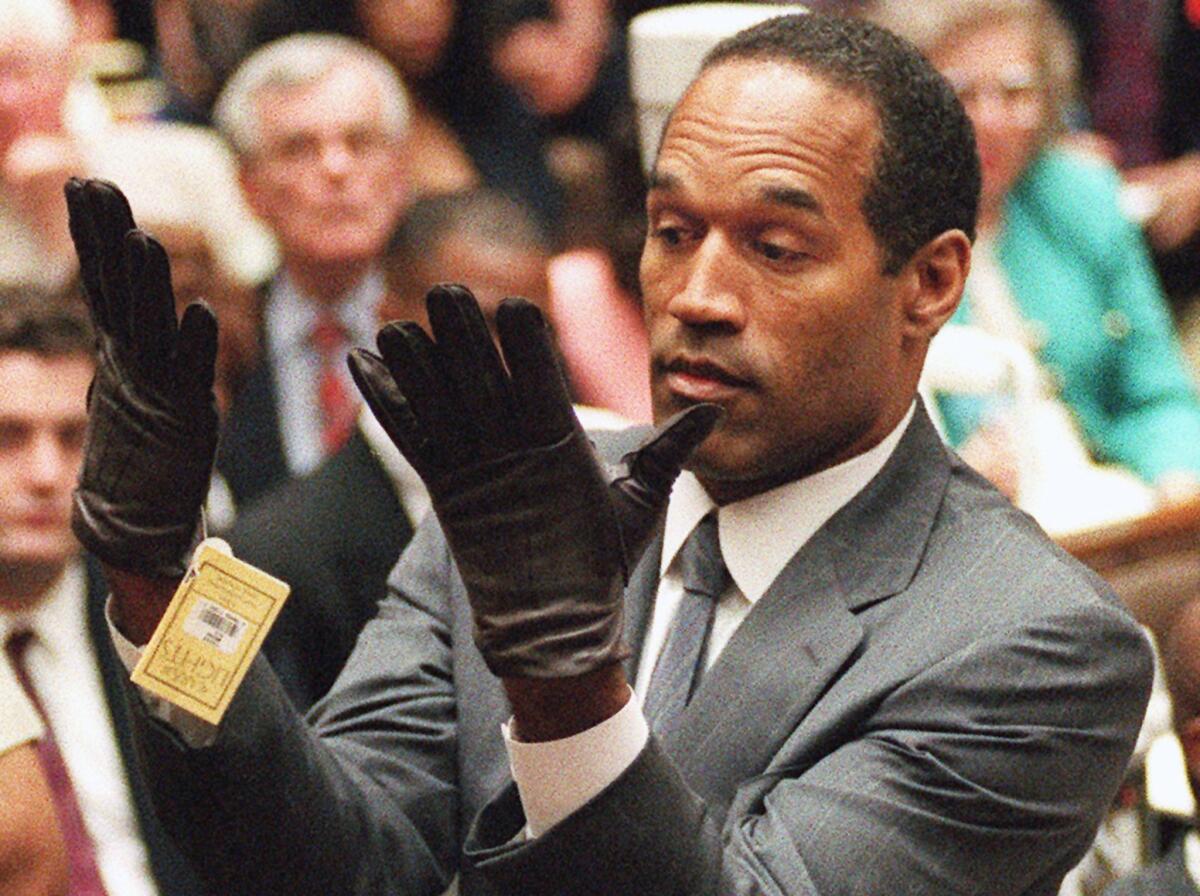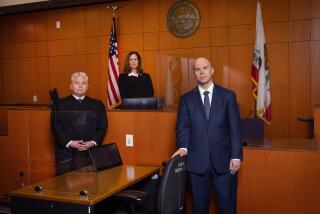Editorial: Another casualty of the O.J. trial: cameras in courtrooms

- Share via
Whether or not they believed O.J. Simpson guilty of the murders of his former wife, Nicole Brown Simpson, and her friend, Ron Goldman, Angelenos were transfixed by the trial that followed the killings — one of the most extraordinary public spectacles of the last half-century. Extravagantly lengthy (nearly nine months) and dramatic (the gloves didn’t fit!) and viewable everywhere every day on TV, it took place in a city still wary and wounded two years after the LAPD acquittals in the Rodney King trial and the subsequent riots. After Simpson was found not guilty, a Times poll revealed how racially polarized L.A. County residents were in their reactions. Among black residents polled, 77% agreed with the verdict. Among white residents, 65% disagreed with the jury’s decision.
Twenty years later, much has changed. The Los Angeles Police Department depicted during the trial — a department that employed a high-profile detective caught on tape saying the “N-word” word repeatedly and investigators and criminalists who bungled the handling of forensic evidence — has been transformed over the years into a far more diverse, more trusted force. The department has instituted stricter procedures for crime scene investigation and the labeling and transporting of evidence.
But one lamentable legacy of the trial was the chilling effect it had on cameras — still and video — in courtrooms across the country. Even as the Simpson case was getting started — but already stoking controversy because of its televised proceedings — the Judicial Conference of the United States, which sets policy for the federal judiciary, voted against expanding what had been considered a successful three-year pilot program putting cameras into select federal courtrooms. Non-federal judges who still had the option of allowing cameras at trials often chose not to do so after the Simpson trial; many fretted among themselves that “we don’t want another O.J.” Only in the last few years has a new pilot program to allow some video cameras in some federal proceedings gotten underway. In California, Judge Alex Kozinski, chief of the U.S. 9th Circuit Court of Appeals, has been a progressive voice on this issue and allows media cameras to cover arguments in appeals courts.
The occasionally over-the-top display witnessed by the nation during the Simpson trial was not caused by the cameras; it was only revealed by them. In general, flamboyant attorneys (and judges) will treat the courtroom as their stage, whether a camera is on or not. Judges and lawyers should get over their fear that cameras will turn courtrooms into carnivals. Cameras chronicle the judicial process, for better and worse, and should be welcomed, not banished.
More to Read
A cure for the common opinion
Get thought-provoking perspectives with our weekly newsletter.
You may occasionally receive promotional content from the Los Angeles Times.









